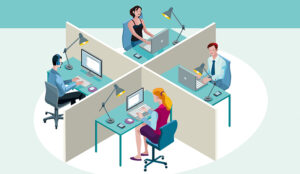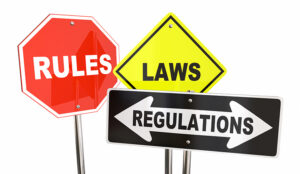The floor of any call centre is the organization’s mission-critical space, intended entirely to serve the very purpose for which the centre exists – handling calls.
As such, your call centre’s main floor, where agents take on customer concerns daily, ought to be bound by a thoughtful and helpful set of rules.
Rules ensure everyone can do their job uninterrupted, allowing customers on the lines to benefit from fast, efficient service. When rules are intelligently laid out and diligently upheld, call centre operations flourish.
When these same rules are poorly devised and defined or lackadaisically laid out, they impede the proper functioning of the agents at work within your call centre.
To ensure your team can keep up their great work on the lines, take a look at the general call centre floor rules and guidelines we have outlined below.
Physical Safety Rules
Although a call centre floor might not be the most inherently dangerous of spaces to work in, there remain some serious considerations worth remembering to maintain relative safety in the area.
Room Capacity
Local ordinances on a building’s maximum capacity by size may vary, but generally, agents should be afforded enough personal space on the floor to function freely without (sometimes literally) tripping each other up.
Emergency Exits and Protocol
Equipping your call centre floor with emergency exits in accordance with local laws is usually a given; however, you should also implement an appropriate training regimen for personnel to ensure they are aware of where these are located and how to use them.
Item Restrictions
Not just any item can or should be brought onto your call centre’s main floor. Whether certain items represent an actual threat to your company and your staff members or simply serve as a significant distraction to all those present, they should be kept off the floor entirely or used sparingly.
Electronic Devices
Call centre agents regularly handle sensitive information on behalf of the company they represent as well as the callers who require their assistance. Preventing certain electronic devices that could be purposely or unwittingly used to capture such information from being brought onto the floor is a widely used and accepted practice.
Food and Drink
Food and drink are often excluded from the floor because they are messy and carry the potential to damage computers, etc., if knocked over or otherwise spilled.
Call Etiquette
In-call etiquette goes a long way in improving customer satisfaction, but it also matters to agents who need to work in close contact with one another. The following examples of call etiquette apply equally to most call centres:
Avoiding Interruptions
When it comes to work interruptions, call centre agents must be especially careful. Taking care not to leave callers on hold for inordinate amounts of time is highly important; however, speaking too loudly or otherwise directly interrupting other agents nearby is equally so.
Holds and Transfers
Elaborating on the issue of putting callers on hold, it is also important not to transfer callers too many times, as this can hurt the customer experience significantly. It’s also important to route calls to the agent with the skill set needed to address the caller’s issue.
Clarity
Speaking in a clear and audible tone improves communication for both parties on the line. However, clarity goes beyond clear intonation – complex concepts need to be explained as concisely as possible as well.
Equipment Concerns
Call centre floor rules for the use of company equipment tend to vary somewhat by the devices that are in use. However, where the use of computers, phones and/or headsets is concerned, there are a few key considerations that many call centres fall back on, such as prohibiting the use of third-party software on company machines.
Collaboration
Collaboration among agents and managers is critical to the continued success of most operational call centres. To facilitate such interactions, the following guidelines come in handy:
Asking for Help
A designated process for requesting help should be taught to all agents to avoid negatively impacting the caller’s experience. In most cases, agents are instructed to place callers on hold while issues they need help with are ironed out.
Coaching
In most scenarios, active coaching is handled away from the call centre floor, where agents and their assigned mentors can work together without additional distractions. There are a variety of important concepts to keep in mind when coaching other agents, such as the following:
- Keep coaching interactions as positive as possible.
- Be specific with examples of optimal approaches to practical support problems.
- Set goals as you go along to encourage trackable growth and improvement.
- If you are providing feedback while on the floor, try to keep it short and actionable.
Floor rules exist to keep call centres productive and safe. Devising and upholding your own organization’s floor rules can help improve performance and morale among your team members.
This blog post has been re-published by kind permission of CallMiner – View the Original Article
For more information about CallMiner - visit the CallMiner Website
Call Centre Helper is not responsible for the content of these guest blog posts. The opinions expressed in this article are those of the author, and do not necessarily reflect those of Call Centre Helper.
Author: CallMiner
Published On: 17th Feb 2020 - Last modified: 18th Feb 2020
Read more about - Guest Blogs, CallMiner






 CallMiner is the leading cloud-based customer interaction analytics solution for extracting business intelligence and improving agent performance across all contact channels.
CallMiner is the leading cloud-based customer interaction analytics solution for extracting business intelligence and improving agent performance across all contact channels. 












